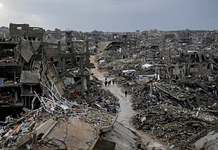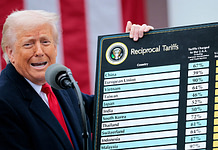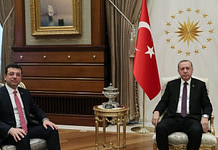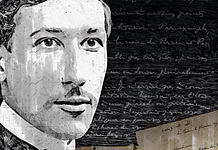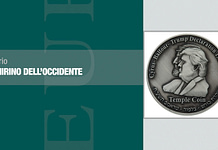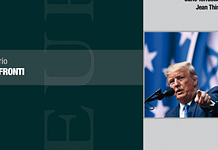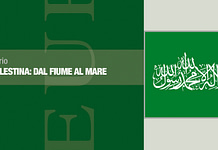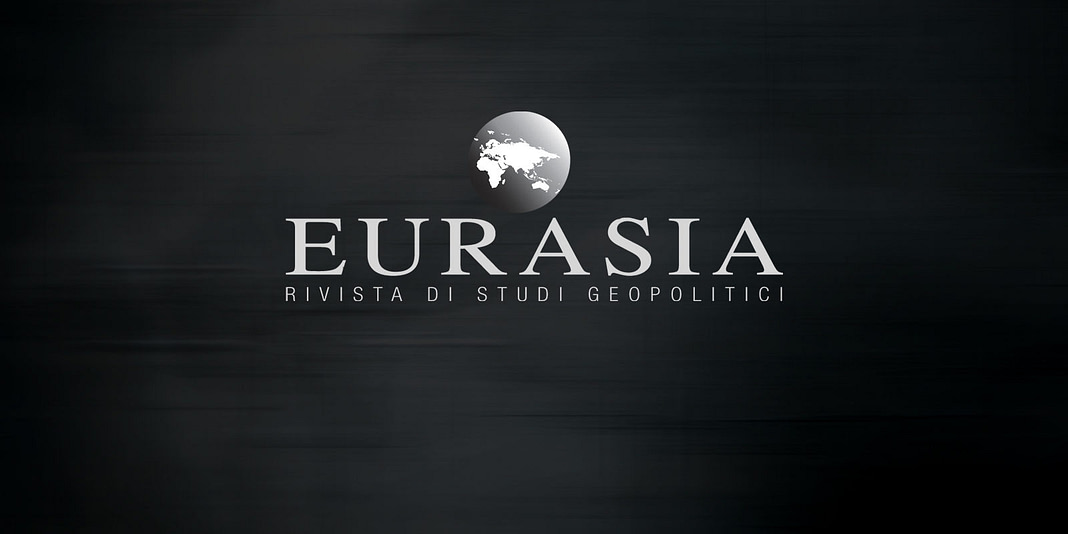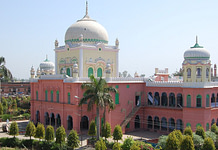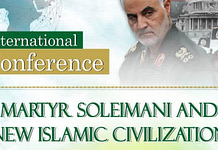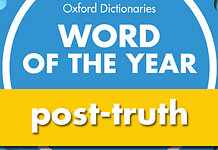Source: “Eurasia”, Italia review of geopolitics, no. 2/2010
Ten centuries of indifference
In 1472 the Gran Prince Ivan III of Moscow, forthcoming gosudar’ (monarch) of all Russia, married a Byzantine princess, Sophia (Zoe) Palaiologina, Constantine XI’s niece, the last emperor of the Eastern Roman Empire deceased nineteen years earlier on the walls of Constantinople after being assaulted by the Turks.
For the occasion, Ivan III assumed the double-headed eagle, the imperial court ceremonial, and the title of Tsar (car’ according to the current transliteration) from “Caesar”, a Roman Emperor heritage that had been handed down until its end in 1453.
It is no surprise that during those same years the legend of the Roman descendance of the Moscow princes was spread in Russia, along with the “Third Rome” theory – Moscow indeed – as the successor of the original and the second Byzantine Rome1.
According to the legend Augustus had split up the empire sharing it with relatives (by the time this story was thought it was common to consider the State as a monarch’s property, and such conception was stated during the classic period as well) making his brother, named Prus, leader of the Vistula’s rivers. After fourteen generations, Rjurik, the Viking who started the Rurik dynasty to which Ivan III belonged, will be born. The third Rome theory, born during the XV century, had been completely formulated only five years after Ivan III’s death, when in 1510 the abbot Filofej wrote a letter to the Tsar Vasili III with the famous sentence «Two Romes have fallen, but the third one stands and there will be no fourth»2 .
A few years after his wedding with Sophia, Ivan III sent his agent to Venice, his goal was to invite to Moscow Italian architects and distinguished people: between those who accepted were Aristotile Fieravanti, Aloisio of Milan, Marco Ruffo and Pietro Antonio Solario.
In a few years Fieravanti built the Cathedral of the Annunciation. Ruffo, Solario and other Italian architects concurred to build the Kremlin, constructing the Palace of Facets and various towers.
It was just the vanguard, since the Italian contribution on the Russian architecture went on for centuries.
There are excellent monographs on this subject3, we’ll mention only some other examples, such as Bartolomeo Francesco Rastrelli (1700-1771), author of the Winter Palace, of the Smolny Institute in Saint Petersburg and the Palace of Tsarskoye Selo (today Puškin), and Giacomo Quarenghi (1744-1817), well known for the Hermitage Theatre (Saint Petersburg).
Despite these significant cultural relationships – mostly one way actually – for many centuries those politics were not as considerable, if we don’t consider the relationship between the Papal Rome and the Orthodox Moscow, mainly religious and not very peaceful. It’s easy to identify the reason why the political relationship between Russia and Italy for almost a millennium was non-existent. Between the IX to the XI century the Kievan Rus’ had been a State that linked through the north-south river course the Baltic Sea to the Black Sea, and did not face west. During the same period, the Kingdom of Italy of Lombard-Carolingian origins was in a deep institutional crisis, and even in the south the Byzantine control had severe troubles leaving room to secession attempts: there was no time for thinking about foreign countries if not for the fear of possible invasions. Between the XIII century and the age of Ivan III the Russian principates had to go under the Mongolian Golden Horde, directing towards east; in the same period in Italy the imperial hegemony attempt failed causing an extreme political break, especially in the centre-north area of the country: the Italian “foreign” policies aimed to ask for military help to close cities, national leagues of Guelphs and Ghibellines and to other near military powers. While Muscovy found its way out of the Mongolian control and reunified the Kievan Rus’, finally becoming an important European country, Italy, since Charles VIII’s coming, goes into its dark ages when the peninsula becomes battlefield and land of conquest for big foreign military powers. In those thousand years between the birth of Rus’ and the Napoleonic age, Russia’s history is about the rise of a powerful nation and the Italian history is about the decline of an important nation, although even Moscow didn’t have the strength to look away from its region. Therefore, while Italy focused on internal fights, the Kremlin took care of the Russian reunification not going beyond Ukraine and Belarus, expanding mostly towards east, in the exciting Siberian Cossacks’ run between ‘500 and ‘600. In those conditions, the two national histories could not encounter, except for the cultural gaze exchanges that we briefly mentioned before.
Italy discovers Russia
In the struggle against Napoleon’s France Russia under Alexander I gained the title of Europe’s great power. Italy could not ignore its importance anymore, whereas Moscow didn’t need to attach importance to our weak and divided peninsula: hence why Italy started to “discover” Russia in early 800’s, but it took a longer time before Italy could be viewed in the same way.
As we’ll see, we could assert that Moscow, in its Soviet period, did not completely discover Italy.
For about a century, this “discovery”, wasn’t exactly appreciated by the Italian. Russia, considering its role in the Holy Alliance, was constantly hostile to the Italian reunification process – although its reunification was gladly accepted by the Russian intellectuals. More than fifty thousand Italians (both northerners and southerners) joined the great Napoleon’s Russian campaign, mostly in the fourth corps commanded by the Vice-King, foster child of the Emperor, Eugène de Beauharnais. These fifty thousand men faced the same tragic fate as most of the Grande Armée, but only after being covered in glory at Borodino.
In 1849 the Russians concurred to the defeat of the revolutions of 1848 invading Kossuth’s Hungary; helping the Habsburgs, indirectly facilitated their Italian campaign, even though in the peninsula, during the Hungarian campaign, the revolution was already dying.
A few years later the Habsburgs, showing ingratitude, sided against the Romanovs in the Balkan area. This could have made the Russian Empire a potential ally for the Italian Risorgimento, considering the common hostility towards Austria, but the geographic distance, the diplomatic isolation of Moscow and the poor history of the diplomatic relationships between the two countries drove the Count of Cavour to not even consider this hypothesis, deciding instead to aim at London and Paris. In 1855, the Count of Cavour chose to give a positive answer to the requests of the two western powers, though the public opinion and his same cabinet didn’t feel the same way, sending Piedmont soldiers to fight in Crimea against Russia and, as a consequence, in favour of Vienna which diplomatically endorsed the intervention. Though the Crimean war is usually portrayed as a Count of Cavour’s “diplomatic masterpiece”– whom turned the Italian issue into a matter of International politics, rather than a public order question – the British historian Denis Mack Smith raised various doubts, asserting that the intervention was forced by Vittorio Emanuele II and at the Congress of Paris «the results were disappointing», enough to lead the Count of Cavour to hope «to find an alley in the defeated Russia»4.
Actually Italy went on looking at the western powers, and after the unification – when our country’s goals aimed at the Balkans – Russia became a political “competitor”. The concern towards the Russian-German-Austrian Dreikarserbund, potentially able to cut Italy out of the Balkans matter5, led our nation to approach Germany, and the crisis between the three Emperors coincided with the birth of the Triple Alliance. In other words, Italy replaced Russia in the Austrian-German alliance system.
Only in early 900’s Italy started to discover Russia on a different perspective, not like a far threat but rather like a potential friend.
Russia as a diplomatic counterbalance
Italian diplomatic history is made of balances and counterbalances, allies and “friends”. It is understandable considering that it has been the last of the great powers, and that since 1943 it is just a middle power. Rome has always bound itself with powerful allies, under whose shield it could lead its politics; in the meanwhile, not to surrender to its senior partner, Italy tried to endorse a different power, a “friend” rather than an ally, in order to take advantage of this triangulation to gain autonomy.
The Risorgimento was made under the Second French Empire’s protection but Piedmont kept tight relationships with England. Without this second reference point the Italian history would have been different. Napoleon III promoted the Sabaudian crown’s expansion towards the northern area of Italy, in order to move against the Habsburgs, but in its strategic plans it would have been just a French satellite state, just like the other two Italian kingdoms that would have been born in the centre and the south of the peninsula. The English, instead, did not sympathize with Austria but they were even more afraid of the French expansion, therefore they decided to support in a crucial way a further Sabaudian expansion until the creation of a unified Italy, which would have been useful to check France in the western Mediterranean.
After 1871, with the fall of the Second Empire and the launching of a clerical republic in France, Rome had to give up the alliance with Paris and, after an excessive hesitation, it aimed for an alliance with Germany. The Italian diplomacy hoped to raise England to the status of ally, but it didn’t become more than a “friend” keeping its role of counterbalance. The Italian experience in the Triple Alliance could be compared to a wave: the tide raised until it reached the top with Crispi’s presidency; then it broke against Adua’s rock and started to flow again. It was during this period, characterized by an open, dynamic and partially inconsistent diplomacy of Italy – between the Austrian-German allies and the French-British “friends”– that Rome concluded its first formal agreements with Russia.
Around 1907 the Russians and the British reached an arrangement about the tensions in Asia (Persia, Afghanistan etc.). Since Moscow became “friend” of our “friends”, Rome tried to approach to it as well signing commercial agreements first. With the Bosnian crisis in 1908 the Ministry of foreign affairs Tittoni tried to come to an Austrian-Italian-Russian agreement in the Balkans, but Berlin’s intervention to back up Austria stopped the plan, making Vienna particularly self-confident and leaving Moscow hesitant. The following year though Russia took the initiative.
On October 24th 1909 the Tsar visited the King in Racconigi: the Ministry Aleksandr Isvolskij introduced an agreement draft to Tittoni and, to avoid possible hesitation by the Italians, he showed a copy of the declaration of neutrality between Austria and Russia in 1904: it was kept secret since it was obviously addressed against Italy. Even the Racconigi treaty was drawn in secret, and it was planned for Italy and Russia to keep the status quo in the Balkans and, if it was impossible, to facilitate the birth of national states instead of the imperial expansion of external countries (such as Austria-Hungary). The Treaty, immediately followed by another bilateral agreement with Vienna (Italy continued to adopt the “allies and friends” policies) didn’t limit to just the Balkan area: Rome agreed to support the Russians on the straits of Bosporus and Dardanelles in return for allowing them the occupation of Cyrenaica and Tripolitania. As Sergio Romano writes, «The promise of Racconigi showed that Italy was ready to increase the number of players to reduce the Anglo-French hegemony» in the Mediterranean6. For the first time, Russia was in the game of balances and counterbalances of the Italian diplomacy.
The big military conflagrations always represent a negative event for the disvantaged powers, and this is the case of Italy during its entire modern unitary history. With the beginning of the Great War, Rome was forced to side one of the two coalitions in war – and predictably it chose to support the one that could have represented a bigger danger7. Being by Russia’s side, in this situation, was a coincidence after all: because actually Italy lined up with the French and the British. The Tsar’s Empire could have been useful after the war, if it didn’t anticipate the fate of the three big defeated empires that had been broken up and brutalized by the greedy and vengeful Versailles’ politics. Italy ended up alone, with three strong allies – France, England and U.S.A. – and no “friend” able to help her. The French and the British – even for the lack of immediate threats, and so a scarce need to be in a good relationship with Italy – showed to not be keen to give a hand in the Balkans, in the Mediterranean and in Africa, lands that could increase the Italian power and become a threat for them. Wilson, strongly disliked the Italian diplomacy, and was a further obstacle rather than helpful: after him the U.S. adopted a political isolation, and Rome remained alone, Cinderella amongst the two evil sisters, not to mention stronger than her, willing to keep it as a junior partner in the triad (to restrain Germany and communism) – but surely nothing more than that. So we can interpret the acknowledgement of the USSR by Mussolini on February 7th 1924 (one of the first European governments to do it) in the light of the pattern we mentioned so far. Without Germany, the Soviet Union was viewed as the “friend” able to be a counterbalance with the allies8. This didn’t last long though, first for Mussolini’s hesitations to side against “the western demo-plutocracies”, and second for the return of Germany in the international scene, which became the new point of reference on its foreign policy. During the World War II Mussolini sent Italian soldiers for the third time – after Napoleon and Cavour – to fight against Russia; and like the previous two times, the Italian didn’t follow own geopolitics interests to do this, they just entrusted themselves to the ally which decided and guided the war. It’s well-known that Hitler didn’t even consult with Mussolini before launching the “Operation Barbarossa”, that ended up to be the turning point for the war, but not in the meaning that Führer wished.
After the defeat, but before the end of the war, the importance that the Soviet Union was having in the international politics, and that it could have in the Italian foreign policy, was clear to everybody.
The Italian Kingdom, during the conflict, was subject to an Anglo-American control commission. Renato Prunas, able and daring General Secretary Ministry of foreign affairs (de facto minister, since titular of the department was prisoner of the German), decided with Badoglio to increase their negotiation abilities involving the USSR in the game: in the winter 1943-44 he started negotiating with Andrej Vyšinskij leading in March to regular diplomatic relationships between the Italian Kingdom and the USSR. The problem was that Moscow, by then, didn’t “discover” Italy as a functional geopolitics element and, as we’ll see, this condition lasted during the following decade as well, compromising the attempt of the Italian approach; also, being Italy in the western sphere of influence, the Soviet decided to not deal with the diplomacy but only with the communist party9. In this circumstance the Kremlin, which only expected from this agreement to send a message to the Anglo-Americans, treated with an extreme coolness the Italian ambassador, Pietro Quaroni, in Moscow. The Roman diplomacy was soon to receive a cold shower by the Soviets. In the post-war period broad sectors of the Italian diplomacy and politics had strong doubts about the atlanticist choice of the Prime Minister Alcide De Gasperi and his Ministry of foreign policy Carlo Sforza. In particular Manlio Brosio, expert liberal politician who in late 1946 replaced Quaroni as ambassador in Moscow, pleaded the neutralist choice, hoping that Italy could get better with a new “decisive weight policies”: like a beautiful woman who keeps the two admirers on tenterhooks, gaining even more attentions from the suitors, Rome had to stay in balance between the two arrays and enjoy that privileged position. Actually though, it was impossible because the Soviets took for granted that Italy had to be in the US spheres of influence: therefore they didn’t show interests towards Brosio’s project, willing to have a “popular diplomacy” with Italy through the local communist party10. Brosio, given the Soviets’ indifference, ended up to convert himself into to the atlanticism, becoming also General Secretary of the NATO between 1964 and 1971.
The idea of establishing friendly relationships with the USSR to use it as counterbalance for the powerful and intrusive North-American ally and gaining room for independent actions (especially in the Mediterranean) remained a constant presence in the Italian ruling class. The “new-atlanticist” wing, against the “orthodox atlanticists”, carried on such project. In early 1956 the President of the Italian Republic Giovanni Gronchi started to converse with the Soviet ambassador about the chance of finding a peaceful solution on the German matter, promoting the confederal union of the two union and their neutralization. The Soviets were interested, but the orthodox atlanticists Segni and Martino – respectively Prime minister and Ministry of foreign policy – intervened to stop, here as in other situations, the presidential diplomacy. Washington didn’t like the solution Gronchi suggested, because in 1954 it included West Germany in the NATO launching its rearmament with anti-Soviet purposes (as a response to that act, in 1955, the Warsaw Pact was made).
In February 1960 Gronchi went to visit Moscow, hoping to open the conversation on the German matter and on the relationships between the two coalitions but, surprisingly, during a reception at the embassy Nikita Chruščëv publicly humiliated him, in a further proof of how little the Soviet cared of the Italian diplomacy. Chruščëv, showing a lack of tact, blamed the Italians for the «criminal action» of the decade before and comparing the scientific Soviet achievements (the Sputnik just landed on the moon) with the unemployment of our «burgeois state». The Prime Minister Amintore Fanfani had more luck in August 1961, when he went to Moscow; although, Chruščëv didn’t acknowledge the role of Italy as a possible mediator between USA and USSR, and while Fanfani was going back to Italy, Chruščëv decided to solve the German matter with the building of the Berlin wall. As a matter of fact, since then Rome gave up on actively looking for a friendship with Moscow, focusing its autonomy expectation on the Mediterranean and showing a certain loyalty towards Washington in the confrontation with the USSR.
The end of the two-way contrast put the Italian foreign policy in crisis: without an European enemy for the USA, there is no opportunity to enhance its contribution in the alliance. The only solution is the one Italy adopted in the past: trying to counterbalance the ally’s power with a strong “friend”.
The revival of the Russian Federation with Putin clearly shows the way to the Italian diplomacy more aware of the geopolitical role that our country holds. The friendly relationships established with Moscow by the present Italian government make us hope that this requirement has been understood.
Russia as Energy provider
It can not remain unsaid that the most successful Italian visit in the communist Russia, in spite of Gronchi and Fanfani, was Enrico Mattei’s visit. During November 1957 the ENI’s executive signed the first agreements with Moscow for the Soviet oil imported to Italy, in return for digging tools and for crude oil transportation equipment.
During the 70’s, after a sudden oil price soar decided by the OPEC, the Italian government tried to hold the fright by increasing the use of natural gas in the national energetic consumption. For that reason the USSR, along with Libya and Algeria, became a privileged country, and the agreements reached with Mattei were even reinforced.
Italy in the European Union, with an energetic gross consumption of 186,1 millions of tonne of oil equivalent (mtoe)11 , comes only after Germany (349), France (273,1) and United Kingdom (229,5). In terms of gross importations12, Italy overtakes the two western countries with 164,6 mtoe getting close to Germany (215,5). In the energy dependence ranking, or rather in a ratio of importations and gross consumption, Italy 86,8% overtakes all the other big European countries, like Spain (81,4%), Germany (61,3%), France (51,4%) and UK (21,3%), ending up to be behind only small countries like Cyprus, Malta and Luxembourg (which are fully dependent) and Ireland (90,9%)13. It’s interesting to notice that the dependence datas are increasing: In 2004 it was the 84,5%14. Though Italy is the fifteenth energy consumer in the world, it’s also the ninth major energetic importer. Oil and natural gas dominate the supply of primary energy in Italy, therefore even the sight of its importations (added up to the 85% of the total): the country is the seventh major importing country of oil in the world, and the forth major importer of natural gas15.
In this perspective Russia, major energy provider, becomes fundamental in the Italian geopolitics. Rome needs to keep friendly commercial relationships with Moscow to preserve the transits of Russian hydrocarbons to our country: therefore it’s easy to explain the choice the ENI made to cooperate with Gazprom, and in particular with the construction of the South Stream gas pipeline, that bypass the unstable western Europe. This factor adds up to the need of a diplomatic counterbalance in the attempt to suggest, without any doubt, Russia as one of the necessary pillars of the Italian foreign policy in the XXI century.
(Translated by Giuliano Luiu)
1. Cfr. Nicholas V. Riasanovsky, Storia della Russia. Dalle origini ai giorni nostri, Bompiani, Milano 200310, pp. 113-114.
2. Ibidem, p. 132.
3. See also: Ettore Lo Gatto, Gli artisti italiani in Russia, 3 voll., Ministero degli Affari Esteri, Roma 1934-1943.
4. Denis Mack Smith, Il Risorgimento italiano, il Giornale, Milano 1999, pp. 296-297.
5. Fundamental on this subject Brunello Vigezzi, L’Italia dopo l’Unità: liberalismo e politica estera in Idem, L’Italia unita e le sfide della politica estera. Dal Risorgimento alla
Repubblica, Unicopli, Milano 1997, pp. 1-54.
6. Sergio Romano, Guida alla politica estera italiana. Da Badoglio a Berlusconi, Rizzoli, Milano 20062, p. 20.
7. Cfr. Marcello de Cecco, Gian Giacomo Migone, La collocazione internazionale dell’economia italiana, in Richard J.B. Bosworth, Sergio Romano (a cura di), La politica estera italiana / 1860-1985, Mulino, Bologna 1991, pp. 147-196.
8. Michele Rallo’s considerations partially move this way, Il coinvolgimento dell’Italia nella Prima guerra mondiale e la “Vittoria mutilata”. La politica estera italiana e lo scenario egeo-balcanico dal Patto di Londra al Patto di Roma, 1915-1924, Settimo Sigillo, Roma 2007. See also Manfredi Martelli, Mussolini e la Russia, Mursia, Milano 2007.
9. Cfr. S. Romano, Guida alla politica estera italiana, cit., pp. 26-27.
10. Cfr. S. Romano, Guida alla politica estera italiana, cit., pp. 68-69.
11. Or rather: primary productivity + importations – exportations.
12. After-tax importations of the exportations.
13. All these datas are from Europe’s Energy Portal: <http://www.energy.eu/>.
14.<http://ec.europa.eu/energy/energy_policy/doc/factsheets/country/it/mix_it_it.pdf>.
15. <http://tonto.eia.doe.gov/country/country_energy_data.cfm?fips=IT>.
Questo articolo è coperto da ©Copyright, per cui ne è vietata la riproduzione parziale o integrale. Per maggiori informazioni sull'informativa in relazione al diritto d'autore del sito visita Questa pagina.


